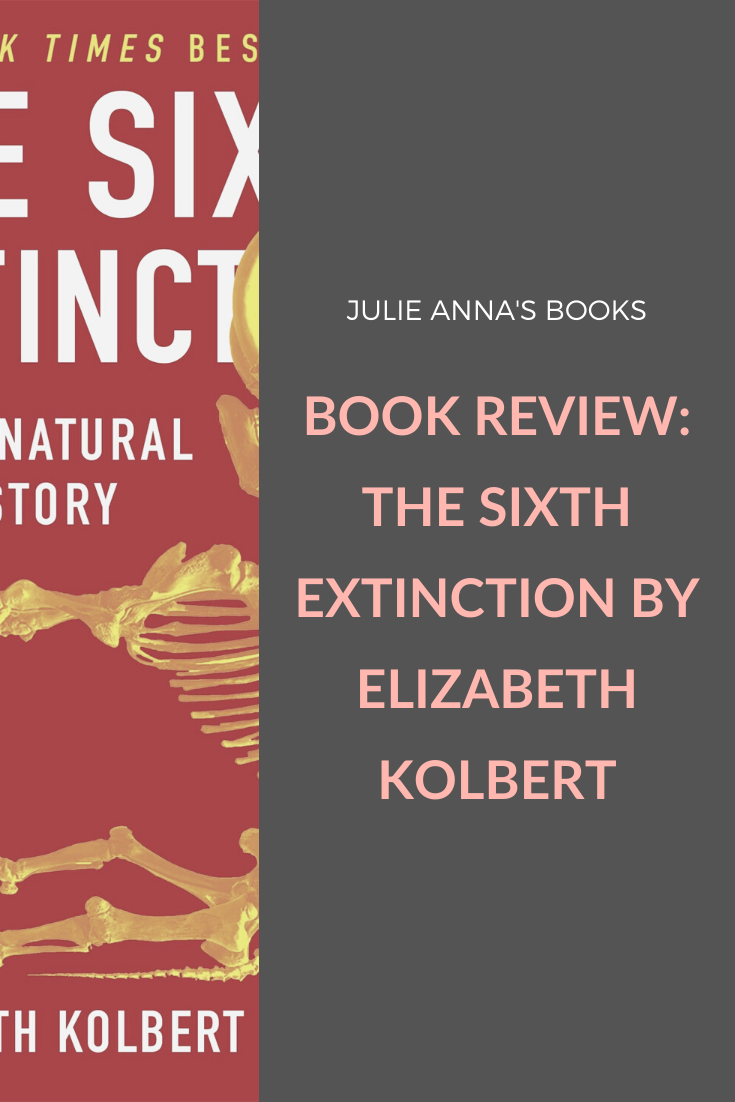Release Date: February 11th, 2014
Genre(s): Non-fiction, Science
Publisher: Bloomsbury
Pages: 336
Rating:
The Sixth Extinction is an exploration of the world’s prior mass extinctions, and the catalysts behind each of them. It also describes some of the more recent extinctions, and how human activity was a big factor in these environmental events. Using current and historic examples of animal species on the decline and those that are extinct, Kolbert shows how humans could be the catalyst for the sixth extinction.
Aside from one environmental chemistry course I took in college, I can’t say I’m too informed on environmental and climate science. That being said, I found this book to be very informative and accessible for those looking for an introductory book on our evolutionary history and what impacts the growth and decline of particular series. The writing of this book did often switch between more scientific discussion and casual dialogue, which was very noticeable at times, but is likely done to appeal to a wider audience.
There were many chapters in this book that I found incredibly interesting, so much that I had to put down the book to find more information online. This was especially the case during one chapter that discussed a massive decline in the bat population in America due to an invasive fungus. Since this book was written a few years ago, I was eager to see if anything changed in regards to this issue. This is just one example, but there were several other chapters where I wanted to continue learning about that chapter’s subject.
Despite all of the interesting topics of this book, the overall subject matter of this book is both concerning and depressing. If you’re curious about how much of a negative impact humankind has caused the planet in just the last few decades, this book will tell you all about it, down to how the slightest change in pH levels due to more carbon dioxide emissions will kill much of our marine life. It’s definitely a book I still recommend because of topics like this; it’s easy to not realize how small contributions, positive or negative, cause large-scale changes. There are so many examples in this book that demonstrate how easily habitats are impacted, from invasive species to changes in climate, and there are an infinite number of other examples out there, too.
When originally picking this up, I was expecting this to be a cross between a historical read, and a future read, with a little more emphasis on our future. But by going through other mass extinctions throughout history, Kolbert answers the question of why the sixth extinction will likely be caused by humans, without directly having to say it.
In sum, The Sixth Extinction is a great book to pick up, whether you’re looking for examples of man-made climate change, or a quick history of our study of prehistoric eras. And if you’re interested in the subject and don’t know where to start, this book will certainly help point you in the right direction – I know it has for me. And even if you’re not interested in the sciences, still give this book a go. You’ll be surprised at some of the things you’ll learn about human impacts on the environment.




